 100. Antony and the Johnsons | I Am a Bird Now
100. Antony and the Johnsons | I Am a Bird Now(Secretly Canadian, 2005)
Antony Hegarty's soulful voice, so high and crisp, just slightly wavery and watery, is the perfect vehicle for his ballads of yearning and melancholy. The very first words heard on this album are, "hope there's someone who'll take care of me/ when I die, when I go." But this isn't hopeless or ugly music, it's epic and beautiful. Antony's classical piano, often joined by graceful string and horn arrangements, lends a quiet elegance to these sweet, sad, sensual tunes.
 99. Wilco | Yankee Hotel Foxtrot
99. Wilco | Yankee Hotel Foxtrot(Nonesuch, 2002)
The famously troubled production of this album eventually resulted in Wilco's defining statement, with the one-time pop/country outfit somehow morphing into a studio-based avant-folk group produced by multi-instrumentalist and electronic experimenter Jim O'Rourke. Jeff Tweedy's nonsensically poetic lyrics, still sung with a hint of a country twang, now drift above moody aggregations of low-key guitar, ambient atmospherics and the inventive drumming of Glenn Kotche. The album boasts one stunning, emotionally affecting song after another, with the music often flowing in and out of noisy sound collages in between tunes.
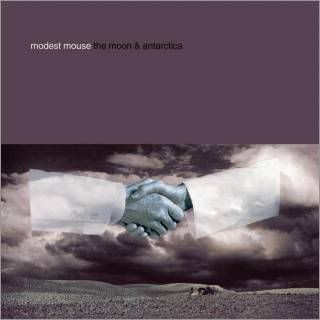 98. Modest Mouse | The Moon & Antarctica
98. Modest Mouse | The Moon & Antarctica(Epic, 2000)
This album captures the point when Modest Mouse signed with a major label but hadn't yet decided that doing so meant nakedly appealing to the masses with poppy singles and a new, clean sound. Instead, The Moon & Antarctica definitely represents an extreme left turn from the band's earlier rowdy rock, but not a turn towards accessibility. Instead, it's an obtuse concept album (about mortality and one's place in the universe, of course) that balances the band's spazzy tendencies against the melancholic haze of the production.
 97. Cadaver In Drag | Raw Child
97. Cadaver In Drag | Raw Child(Animal Disguise, 2007)
This noise/metal band turns to straight-up rock and shows a lot of the so-called rockers how it's done. With pure attitude, that is. Three tracks: the bookends are metal, crusty and sludgy as can be, while the middle track, appropriately titled "Fuck This Place," takes a stab at messy, visceral bar band rawk. It's great, raging fun.
 96. The Silver Mt. Zion Memorial Orchestra and Tra-la-la Band | Born Into Trouble As the Sparks Fly Upward
96. The Silver Mt. Zion Memorial Orchestra and Tra-la-la Band | Born Into Trouble As the Sparks Fly Upward(Constellation, 2001)
This spinoff from Godspeed You Black Emperor! quickly outdid its parent band in terms of grandiose naming, and by this, their second album, they had also shed the notion that they were a more modest, stripped-down version of the larger group. This album seethes with tension in its epic clouds of guitar riffing and its more subtle moments of despairing string arrangements. The band's sadness is revolutionary rather than emotional, a lament for a world going in the wrong direction, and its jaw-dropping final song, a gorgeous slice of orchestral folk, is a seductive call to storm the barricades.
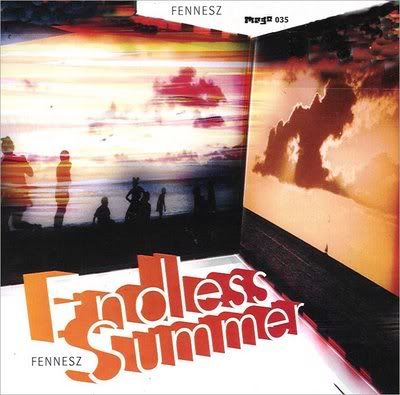 95. Fennesz | Endless Summer
95. Fennesz | Endless Summer(Mego, 2001)
The title of Christian Fennesz's instant classic third album evokes 60s pop and particularly the Beach Boys, and it's an appropriate reference point despite Fennesz's origins in glitchy electronic music. This album isn't a radical departure for the Austrian electronic composer, merely a small shift in emphasis: his heavily processed guitar tones and sheets of white noise have been re-purposed for increasingly melodic ends, layered into pillowy clouds that hint at proper tunes. It's rich, beautiful music, with rhythmic shards of electronic noise glistening like shattered glass within the bubbly pop surfaces.
 94. Themselves | The No Music.
94. Themselves | The No Music.(Anticon, 2002)
Others might prefer the languid jams of cLOUDDEAD's self-titled single collection, but for my money this disc, the second from the duo of rapper Dose One and producer Jel, narrowly wins out as the best produced by the Anticon collective. As with all of the Anticon material, the album deconstructs rap so much that it barely resembles rap anymore. The music, with its lush synth melodies and skittering beats, owes as much to electronica and lo-fi rock. Dose's rapping, in his whiny high-register, is just as unconventional, constantly tripping over excess syllables as he races through each schizophrenically structured song, often recalling a Beat poet as much as a rapper.
 93. Whitehouse | Wriggle Like a Fucking Eel
93. Whitehouse | Wriggle Like a Fucking Eel(Susan Lawly, 2003)
The title says it all, no? It's as violent, ugly and hard to take as you'd expect from this band and that title, and the funniest thing about it — besides William Bennett's hysterical repetition of the title line atop nasty streaks of electronic noise — is that this was actually released as a 12" single from their equally grimy full-length Bird Seed. The album has some other good tracks, along with some kind of pointless filler, but the single towers over every other track on the disc to such an extent that it only makes sense to highlight it here, as a brutal vinyl slab of noise, backed with a vocal-less take in a similar vein.
 92. Sleater-Kinney | The Woods
92. Sleater-Kinney | The Woods(Sub Pop, 2005)
If this turns out to be, as seems kind of likely at this point, the final Sleater-Kinney album, it's a hell of a way for the great grrl-punk outfit to go. The band had been steadily progressing throughout their career from the harsh punk of their early masterpieces to an increasingly melodic, poppy mainstream sound. The Woods reverses that trend, delivering a raucous set of tunes that don't so much look back to the band's formative years as reimagine their punk energy in terms of lo-fi garage rock. The fuzzy guitars, the stomping drums, the bursts of distorted melodicism: all form a propulsive backdrop for Corin Tucker's howling, yodeling vocals.
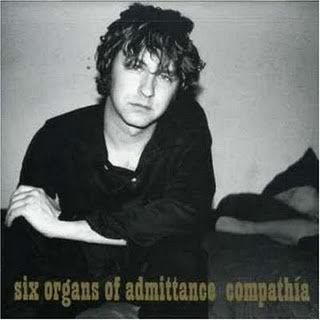 91. Six Organs of Admittance | Compathia
91. Six Organs of Admittance | Compathia(Holy Mountain, 2003)
Ben Chasny's fifth album as Six Organs of Admittance hones and tightens his distinctive blend of folk, psychedelia and raga into an economical, stripped-down style in comparison to the meandering jams of earlier recordings. These songs are densely packed, with beds of tinkling, click-clacking percussion beneath Chasny's jangly guitar, which deftly quotes from both Indian music and traditional folk. These are haunting tunes, with hints of darkness drifting — like the clouds of feedback that occasionally threaten the delicate arrangements — through the otherwise pastoral atmosphere.
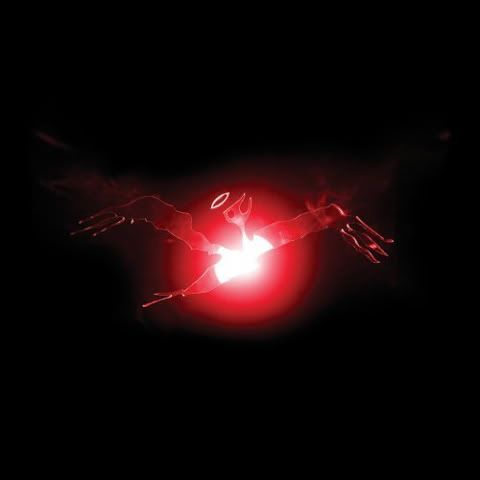 90. El-P | I'll Sleep When You're Dead
90. El-P | I'll Sleep When You're Dead(Def Jux, 2007)
Rapper/producer El-P's second proper solo album does more than fulfill the promise of the rapper's dark, tightly produced debut Fantastic Damage: it builds exponentially upon it, crafting a sprawling set of songs in a constant tug of war between melody and abrasion. Looser, less mechanical than its predecessor, it's every bit as dark and angry, freely incorporating rock and industrial influences (Trent Reznor and Matt Sweeney, among others, appear as guests) into his harsh sci-fi-influenced palette. By the time the last track arrives, with Chan Marshall's sweet vocals set adrift in the churning waves of sound, El-P has taken the listener on an exhausting journey through this hip-hop distopia.
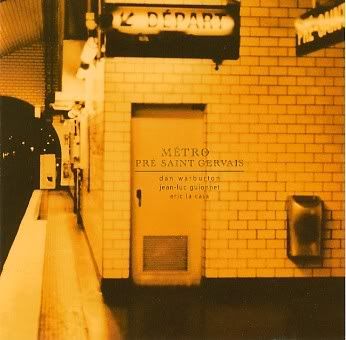 89. Dan Warburton/Jean-Luc Guionnet/Eric La Casa | Métro Pré Saint Gervais
89. Dan Warburton/Jean-Luc Guionnet/Eric La Casa | Métro Pré Saint Gervais(Chloé, 2002)
These recordings were made in a bustling subway station in Paris, in which the performers' musical improvisations (Warburton on violin and Guionnet on sax) are only one small component amidst all the activity captured by La Casa's dynamic recording. Snatches of conversations, train noises, mechanical beeps, machine hums: the violin and sax drone and blurt within this complex sound field, adding to and commenting upon the sounds around them, turning all the frenzied activity of daily life into potential music.
 88. Sun City Girls | Libyan Dream
88. Sun City Girls | Libyan Dream(Abduction, 2001)
Part of this legendary underground band's Carnival Folklore Resurrection series of self-released forays into various aspects of their uncategorizable aesthetic. This one leans heavily on trash-punk and ethnic appropriation, opening with a distorted, messy cover of the garage rock classic "Journey to the Center of the Mind," and from there venturing into lengthy, virtuoso riffs based around Middle Eastern melodies or Indian ragas, plus "Opium Den," a drawling ode to the titular drug. As an overall summary of this obscure band's varied oeuvre, it covers a lot (but not all; that'd be impossible) of the territory.
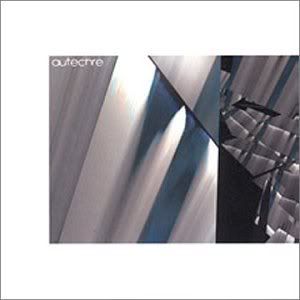 87. Autechre | Confield
87. Autechre | Confield(Warp, 2001)
The music of Rob Brown and Sean Booth is often called abstract, but that's not quite correct. Rather, their abstractions are grounded in an eerie sense of melodicism and a knowledge of traditional techno forms that provide context for the duo's machine rhythms and clinking, clattering patterns. Confield's opener "VI Scose Poise" sounds like a skipping record with its glitchy pitter-patter bouncing atop a gauzy trace of melody, but it's hard to imagine what this particular record would sound like if it wasn't skipping. This music is unsettling and destabilizing precisely because it's so carefully balanced between techno's relentless forward drive and the more alien, inscrutable touches of Brown and Booth.
 86. Tom Waits | Blood Money
86. Tom Waits | Blood Money(Anti-, 2002)
Blood Money is one of Tom Waits' collaborations with theater director Robert Wilson, this time for the play Woyzeck, which turns out to be a perfect fit for Waits' particular sensibility. This is a masterpiece of bleakness and cynicism, boasting song titles like "Misery is the River of the World" and "God's Away on Business." The music is equally dark, with boozy carnivelesque melodies surrounding Waits' cigarettes-and-whiskey growl. On one song after another, Waits spits violently about the unfairness and ugliness of the world, while the music evokes Germanic cabaret, string-laden love ballads, and junk-percussion industrial. It's marvelously eclectic and captures Waits at, simultaneously and paradoxically, his most confrontational and his most accessible.
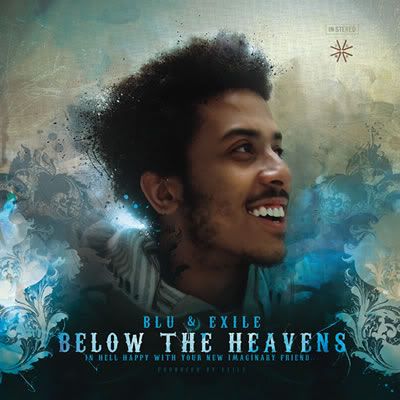 85. Blu & Exile | Below The Heavens
85. Blu & Exile | Below The Heavens(Sound In Color, 2007)
Johnson Barnes, AKA Blu, keeps reminding us on his debut LP that he's only 22 years old, and indeed he has the exuberance and energy of a young man; his rhymes are bursting with vitality and passion, his precocious maturity mixed with the naivete of youth. He raps about God, about trying to pick up girls when he's too broke even to pay his phone bill, about working hard promoting himself (and he's got the ego of an ad man, for sure), about his childhood, about his fears of becoming a dad himself. His fresh-faced flow is matched by the nimble production of Exile, who harnesses soul samples, stuttery piano loops and glitched beats to provide a suitably rich musical counterpoint to Blu's motor mouth. It's infectious and fun, party rap with a surprising spiritual and emotional undercurrent.
 84. Godspeed You Black Emperor! | Lift Yr Skinny Fists Like Antennas to Heaven
84. Godspeed You Black Emperor! | Lift Yr Skinny Fists Like Antennas to Heaven(Kranky, 2000)
The Canadian collective's epic second album strings together a series of "movements" across four tracks and two discs, building dense rock suites where the snatches of found sound and speeches (like an old man reminiscing and rambling about the good old days of Coney Island) set the stage for the band's explosive build-and-soar dynamics.
 83. Xiu Xiu | The Air Force
83. Xiu Xiu | The Air Force(5 Rue Christine, 2006)
Xiu Xiu's fifth album is arguably their best, as the notoriously difficult and uneven outfit rein in some of their looniest tendencies without sacrificing the attributes that made them special in the first place, or, Heaven forbid, making a "mature" album. There's nothing mature, certainly, about Jamie Stewart's unfettered vocals, or his lyrics, which hit like emo high school confessionals, howled and moaned over his band's kitchen-sink approach to music. The explosions of junk percussion and noisy electronic squeals are intact, as are the moments when Stewart shifts fluidly from a whispery hush to an excited, flustered flurry of yelps. And the lyrics are still often so naked, so awkwardly revelatory, that they're embarrassing to listen to. The difference is that it's all so much more focused than usual, so tight and carefully assembled; the band's as abrasive and unpredictable as ever, but now their confrontations and their emotional overload are more artful, more controlled, than ever before.
 82. The Flaming Lips | Embryonic
82. The Flaming Lips | Embryonic(Warner, 2009)
A kind of summing-up record, a double album on which the Lips announce, this is where we've been, this is what we're all about. It bridges the gap between the band's early days as a crusty psych-punk outfit and their more recent reinvention in glossy pop. Everything's here, from the epic, raunchy guitar squalls of the early days to the saccharine orchestrations of The Soft Bulletin to the bubbly electro-pop of Yoshimi Battles the Pink Robots. By adding back in the grit, the energy, and the restless experimentation, the band has forged arguably their most complete album yet, a compendium of slow-moving ballads, avant-rock oddities and irresistibly intense psych-rockers. The album both looks backward, to the band's history and evolution, and forward, suggesting a new consolidation of their sound, grown from the coming-together of their widespread roots.
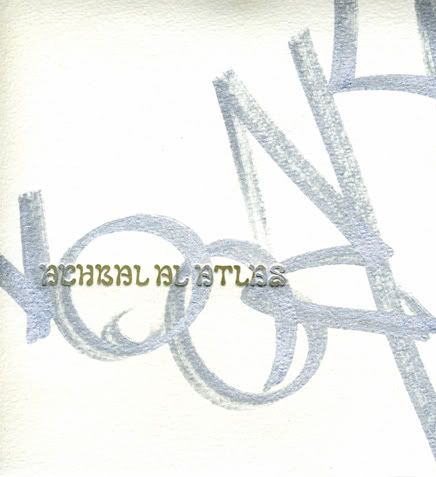 81. Mattin/Tim Barnes | Achbal Al Atlas
81. Mattin/Tim Barnes | Achbal Al Atlas(Little Enjoyer, 2006)
Mattin is theoretically a "laptop musician," even if he doesn't use actual software programs most of the time, preferring to use his computer as a nearly passive way-station for anything that might be floating around any particular space, whether that's bursts of feedback noise, ambient sound, or low-key textural improvisations. Here, what he seems to be channeling is the influence of power electronics: backed by the steady, tension-building drum clouds of Tim Barnes, Mattin unleashes squalls of noise and vaguely political ranting. For those who saw him do this act live back around this time, the record polishes and crystallizes that raw but formalist take on power electronics; for everyone else, it's simply bracing and almost unbearably tense.
 80. Björk | Vespertine
80. Björk | Vespertine(Elektra, 2001)
Björk's best and most intimate album, a quiet masterpiece with tinkling music box interludes and an icy, wintry atmosphere in its clean, sparse electronics. On one beautiful, evocative song after another, Björk's voice playfully dances through the complex beats (provided by electronic music luminaries like Matmos and Matthew Herbert), singing about sex and love with often startling forthrightness, barely disguised in loaded poetic metaphors. The album is poised between chilly electronic perfection and human warmth; it's playful, funny and sublimely sexy.
 79. Sonic Youth | Murray Street
79. Sonic Youth | Murray Street(Smells Like Records, 2002)
Quite possibly the apex of latter-day Sonic Youth, all glistening, piled-up guitar textures (this is the first SY disc with Jim O'Rourke as third guitarist and multiple instrumentalist) and meditative tunes. There's something stirring about Sonic Youth in epic mode: these songs have an insistent momentum that seems to be constantly pushing them skyward, while the vocals of Thurston Moore and Kim Gordon are as roughly melodic and harsh, respectively, as ever. Murray Street finds the band perfectly balancing their capacity for shimmery beauty against the lo-fi abrasion of earlier years, knowing exactly when to build slowly and when to unleash something like the apocalyptic sax explosion (courtesy of free jazz legends Borbetomagus) that caps off "Radical Adults Lick Godhead Style."
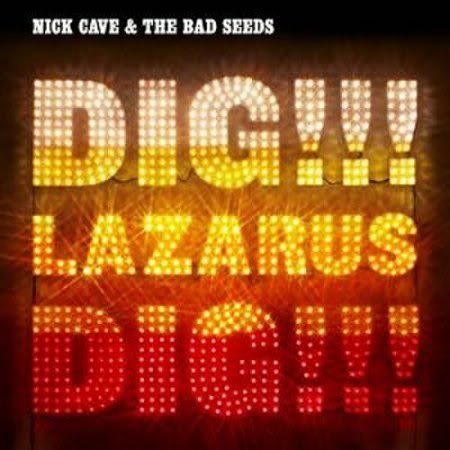 78. Nick Cave & the Bad Seeds | Dig, Lazarus, Dig!!!
78. Nick Cave & the Bad Seeds | Dig, Lazarus, Dig!!!(Mute, 2008)
It's always refreshing, and all too rare, when an aging artist continues to make challenging and satisfying work well past the freshness and excitement of youth. Nick Cave's latest album with his Bad Seeds is energetic and moody by turns, darkly beautiful (the slow throbbing of "Moonland") or bursting with garagey enthusiasm ("Lie Down Here (And Be My Girl)") or creepy and minimal ("Night of the Lotus Eaters"). Far from being an old man's album, it's the album of an artist whose imagination and wit have been undimmed by time, who still gets a kick out of rocking out.
 77. Julien Ottavi | Nervure Magnétique
77. Julien Ottavi | Nervure Magnétique(Sigma Editions, 2003)
As I wrote back in 2003, this is "a work of sonic extremes" that's "enervating and tense," as well as, quite often, "torturous." So it's not a fun time, but that's part of the point. Ottavi's laptop electronic music is an exercise in aggression and listener-baiting perversity, a work designed to send unaware listeners scrambling desperately for the volume knob: just when you've cranked the stereo to check out the subtle tweaks and glossy swoops within a particularly lovely, glitchily melodic segment, Ottavi unleashes an ear-splitting cacophony that obliterates anything in its path. The album's extreme dynamics and sadistic sense of humor ensure that it's not for the faint-hearted, but those who are able to find their way through its tricky byways will find a dense, complex piece of music with far more going on within its depths than simple shocks.
 76. Radian | rec.extern
76. Radian | rec.extern(Thrill Jockey, 2002)
The music of Austrian trio Radian has an instinctive but ephemeral feel for the groove, for rhythm and swing: they translate jazz's irresistible pulsing momentum into nuanced, supple electronic music driven forward by the distinctive drumming of Martin Brandlmayr, who builds grooves piecemeal from accumulations of small clicks, whooshes and ticks. His drumming is the group's core and soul, while bassist John Norman and synth player Stefan Németh build complex structures around these hesitant grooves, as the music keeps shifting organically from the dense, noisy spit-and-sizzle of electronics into stretches of stop/start percussive shuffling.
 75. Battles | Mirrored
75. Battles | Mirrored(Warp, 2007)
Unreal technical virtuosity infuses every second of Battles' complex, tightly packed debut: seemingly impossible collisions of rapid, shifting drums, serpentine guitars, and a heavy bottom-end crunch, with occasional flurries of heavily processed vocals dancing along the top. If that's all they had to offer, this technical proficiency and mechanical precision, it might still be an enjoyable album but not the wonder that it is. The real mystery of this disc is how such a tight band, experimenting wildly with studio song construction, building these technical overloads that sound like a few dozen Rush-caliber musicians jamming together, somehow manages to sidestep the dour pretentiousness of so many proggy jam bands. Instead, this music is damn fun, manic and even beautiful in its own weird way.
 74. Eric Alexandrakis | I.V. Catatonia
74. Eric Alexandrakis | I.V. Catatonia(Y&T Music, 2001)
Recorded while Alexandrakis was recovering from a lengthy illness and hospital stay, I.V. Catatonia is an obscure masterpiece of bedroom experimental pop, bursting with hooks and ideas. Alexandrakis played a whole band's worth of instruments himself, composing elaborate sound collages, distortion-encrusted pop-punk nuggets, and spacey Floydian ballads.
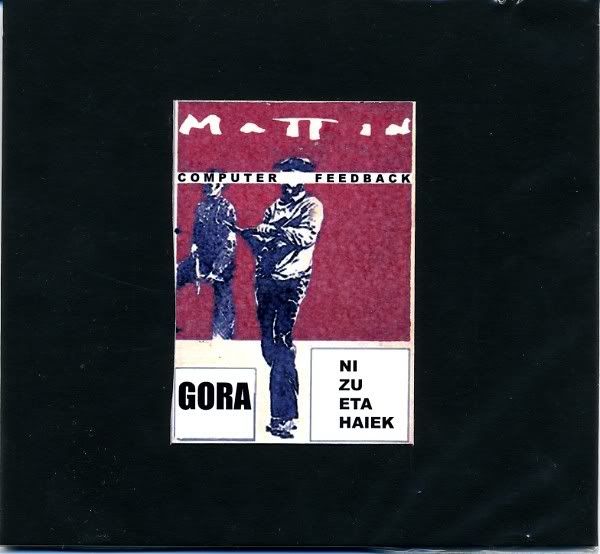 73. Mattin | Gora
73. Mattin | Gora(TwoThousandAnd, 2003)
Mattin at his most raw: chunky blocks of noise, generated by his careful sculpting of feedback, erupt from his laptop's built-in microphone and tinny speaker output. The album makes a virtue of its lo-tech appropriation of high-tech gear, exploiting the sense of blown-out speaker danger that comes from Mattin's minimal set-up. The contrasting dynamics leap sporadically from a feathery hint at the edges of hearing to a suffocating black hole that seems to suck in all sound to its unreachable core.
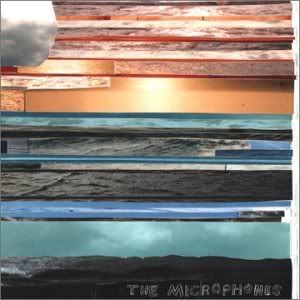 72. The Microphones | It Was Hot, We Stayed in the Water
72. The Microphones | It Was Hot, We Stayed in the Water(K, 2000)
It's been overshadowed by The Glow, Pt. 2, but this earlier offering from Phil Elverum's Microphones is a worthy predecessor, an uncharacteristically tight and focused set of songs showcasing Elverum's rich, deep production sound. This is an album of subtleties: the acoustic strumming slicing through the rumbling electric guitar riffs, the chiming percussion within the churning of "The Gleam," the humming vocal harmonies of "Karl Blau." It has a warm, summery feel, with a hint of melancholy and nostalgia, suggesting some lost long-ago summer evening: the dark, pale hours just before twilight with the waves crashing slowly up onto the shore like the ebb and flow of the guitars and the droning, wordless vocals of "The Glow."
 71. Jay-Z | The Black Album
71. Jay-Z | The Black AlbumDanger Mouse | The Grey Album
(Roc-A-Fella, 2003)/(self-released, 2004)
Two takes on the same raps. On the original, Jay-Z's macho, egotistical odes to himself are framed by rich, dense production and gritty beats. His decision to release the vocal tracks on an a capella record, though, suggests that maybe his ego isn't as prodigious as his lyrics say it is, as he invited anyone with a turntable to try their hand at topping his own album. As a consequence, this album triggered a barrage of remixes, especially after Danger Mouse's inspired mash-up of Jay with the Beatles' self-titled "white album" revealed just how good these raps could still sound in a radically different context, set off against manic beats pilfered from Ringo, and snatches of familiar pop melodies winding around the Roc-A-Fella impresario's distinctive voice. It's now impossible to separate the original album from DM's stunning re-imagination of it. They're brother albums now, even if one's legit and the other's the grey sheep that almost instantly got sued out of circulation — but, fortunately, not off the Internet and not out of memory.
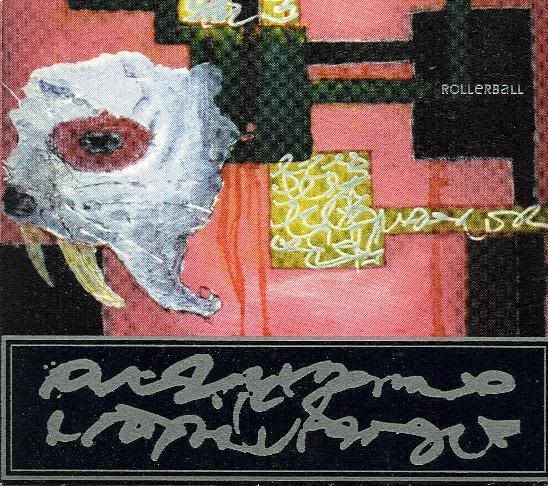 70. Rollerball | Trail of the Butter Yeti
70. Rollerball | Trail of the Butter Yeti(Road Cone, 2001)
It will always be a mystery why the acclaim Portland collective Rollerball received for this stunner hasn't endured, but Trail of the Butter Yeti remains as compelling as ever. It's the perfect balance of the band's lulling hooks and chanted female vocals with noisy dissonance, free-jazz blurting, spacey drones and rhythmic jamming. There's something ritualistic and creepy about this music, as though the listener has stumbled across a coven of witches practicing some arcane ceremony in the middle of the woods, singing joyously above the mysteriously beautiful music.
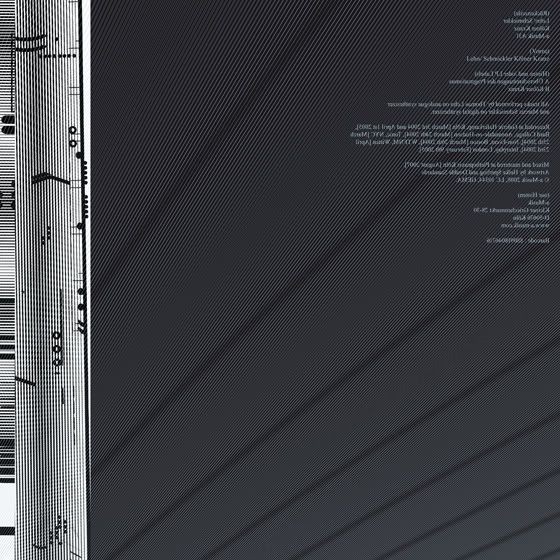 69. Thomas Lehn/Marcus Schmickler | Kölner Kranz
69. Thomas Lehn/Marcus Schmickler | Kölner Kranz(A-Musik, 2008)
Impossibly complex and detailed, this vinyl-only release is arguably the definitive recording from this synthesizer duo, who here unleash two side-long blasts of textural noise. A couple of years ago, I wrote, "There is hardly a single space to breathe or pause for processing over the course of this album's exhausting 36 minutes, unless one counts the necessary lull when turning the record over (which may be why it was conceived as an LP in the first place). It is hard to imagine a musical space more crowded and suffocating, and yet there is little that's chaotic about this blustery music. Every sound seems perfectly placed, deliberately controlled, and the wealth of details adds to the complexity rather than simply accumulating into a dull, undifferentiated roar."
 68. Wolves in the Throne Room | Two Hunters
68. Wolves in the Throne Room | Two Hunters(Southern Lord, 2007)
The second album from this eccentric black metal band, centered around the radical environmentalist philosophy of brothers Nathan and Aaron Weaver, is as dark and bracing as one would expect from black metal. In other ways, though, the band bucks expectations: in the soothing ambient harmonics of opener "Dea Artio," in the melodic vocals of Jessica Kinney on "Cleansing," her voice soaring above a ritualistic drum circle vibe. Though the band's unique attributes come from folding in other musical forms — notably the wide dynamics of early millennial post-rock — into their metal sound, the straight-up metal sequences are equally satisfying, particularly the stirring grandeur of 18-minute closing track "I Will Lay Down My Bones Among the Rocks and Roots."
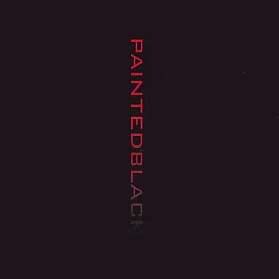 67. various artists | Painted Black
67. various artists | Painted Black(tUMULT, 2003)
"Paint It, Black" must be one of the most covered songs in all of rock music; it's one of those songs that every eager young band aches to put their own stamp on. On this compilation, 11 electronic and avant-garde artists tackle this famous tune, presenting their own "deconstructions" of the classic. The results all populate a certain bleak, dark territory, distilling the essence of the Stones' original into wavery drones, creepy speech samples, skittery beats, with hints of the core melody popping up here and there. The contributions range from the brief a capella take by "shouting choir" Mieskuoro Huutajaat, to the plush electronica of Fennesz and Hrvatski, to the grandiose rawk of Acid Mothers Temple and Circle, to the unsettling sample collage of the Tape Beatles, who house warped remnants of the original tune amidst bits of conversations and what sounds like a recording of a street riot.
 66. Animal Collective | Sung Tongs
66. Animal Collective | Sung Tongs(Fat Cat, 2004)
There are few rock bands around today as fun or as restlessly inventive as Animal Collective. This album, a transitional disc between their earlier, more overtly experimental work and their recent transformation into purveyors of complex electronic pop, pares down the sometimes-quartet to the original duo of Avey Tare and Panda Bear, and the result is a folky, intimate sound well-suited to these off-kilter psych-folk tunes. Best of all is opener "Leaf House," with its exuberant yelps and driving rhythms, and "Winters Love" — which unexpectedly shifts halfway from pastoral drift to propulsive mock-Caribbean rhythms — is equally stunning.
 65. The Dead C | Future Artists
65. The Dead C | Future Artists(Ba Da Bing!, 2007)
The opening track declares them "The AMM of Punk Rock," and although there are equal touches of bravado and whimsy in this pronouncement comparing the New Zealand-based avant rock trio to the famed British improv pioneers, there's some truth to it, too. Certainly, the droney rumble, infused with electronic squiggles, of this opening track is worthy of comparison to the Dead C's forebears. But they hardly stay in this one mode for the album's entire length, instead branching out into clanging noise rock ("The Magicians") and slow-burning pseudo-metal ("Eternity") with hesitant drums constantly threatening to lock into a groove but never quite getting there.
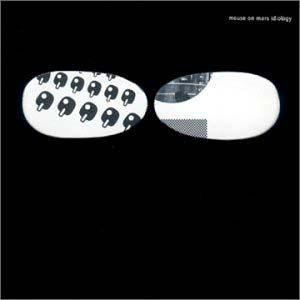 64. Mouse On Mars | Idiology
64. Mouse On Mars | Idiology(Thrill Jockey, 2001)
Jan Saint Werner and Andi Toma include a few nods here to the melodic warmth of their earlier work (the sublime "Catching Butterflies With Hands" especially) but mostly this is an edgier, more jittery album from the duo. It's also their first to include vocals, as drummer Dodo Nkishi gets his vox sliced and diced, tossed around these tracks to dodge around the obstacles put up by the wildly skipping beats. There are nods to prog (the stately "Presence") and a frenetic opener ("Actionist Respoke") that sets the pace for the album's style-hopping diversity.
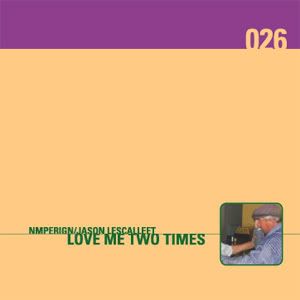 63. nmperign/Jason Lescalleet | Love Me Two Times
63. nmperign/Jason Lescalleet | Love Me Two Times(Intransitive, 2006)
This amazing, kitchen-sink-and-all double-disc set pairs tape loop manipulator Jason Lescalleet with Greg Kelley (trumpet, etc.) and Bhob Rainey (sax, etc.) of nmperign. The results are discombobulating. Rainey and Kelley's squeals and metallic outbursts — Kelley often plays his trumpet with a metal plate vibrating against its bell, for example — are positioned within ambient soundscapes, jutting up against field recordings, thick drones, sheets of harsh noise, industrial clatter and clamor. The album is schizoid in the extreme, with each track switching gears and spinning heads as the trio never settles into any one mode for very long.
 62. Radiohead | Kid A
62. Radiohead | Kid A(Capitol, 2000)
It was an epochal, much-hyped record, Radiohead's follow-up to their massively successful OK Computer. But Kid A found the band largely discarding the sound that had made them popular, experimenting instead with abstract electronic music and assembling the songs piecemeal in the studio. Nearly a decade later, the album retains its power, cutting through all the hype and discourse with the poignant strangeness of its songs: Thom Yorke's often processed, chopped-up voice soaring and skittering atop IDM beats, bassy rumbling, sweeping strings, even hints of the rock energy that once defined Radiohead.
 61. The Necks | Chemist
61. The Necks | Chemist(ReR, 2006)
The music of Australian avant-jazz trio the Necks is very much time-based and pulse-driven: their performances inevitably develop slowly, gathering momentum as they build from a simple foundation into dense washes of sound. These three tracks set some of the band's outright jazziest tendencies (like the tinkling keyboards on the second of three long tracks here) against the whistling hum of electronics and the Krautrock pulse that often drives their best work. It's a marvelous and subtle music of accumulation.
 60. Prurient | The Baron's Chamber
60. Prurient | The Baron's Chamber(Nihilist, 2005)
This harrowing album begins with a thin stream of high feedback and static, washed-out and beaten down, with Dom Fernow sporadically screaming through the choppy noise. By the end of the album, he's built up an oppressive rhythmic drone, overwhelming in its intensity, climbing towards a violent, angry catharsis.
 59. Coil | The Ape of Naples
59. Coil | The Ape of Naples(Threshold House, 2005)
As the album that John Balance and Peter Christopherson were working on when Balance died, The Ape of Naples inevitably has a certain morbid posthumous vibe, as Christopherson assembled the album from Balance's extant, unpolished vocal takes, shaping fragments into some of the band's best and arguably most accessible music. "Tattooed Man" has a woozy Tom Waits-esque feel, while the final song, "Going Up," unexpectedly transforms a British sitcom theme song into a transcendent ballad. Much of the rest of the album is devoted to recycling and rebirth as well: old, familiar Coil songs appear with a fresh gloss, alongside final (but hardly definitive) takes on tracks that the band had been rehearsing, live and on demos, for years. That this patchwork should hold together so well, should be so poignant and eerily beautiful, only makes it all the more impressive.
 58. OutKast | Stankonia
58. OutKast | Stankonia(LaFace, 2000)
OutKast's fourth album, and so far their last true album as a duo, is a loony hip-hop masterpiece that synthesizes the duo's disparate musical touchstones — rap, soul, P-funk, metal, Southern rock, D'n'B — into a sprawling and schizoid collection that sums up everything the group does well. There's the nasty, stomping rock of "Gasoline Dreams," the irresistible pop-rap appeal of hits "So Fresh, So Clean" and "Ms. Jackson," the frenetic drum-and-chant of "B.O.B.," the sexy soul of "I'll Call Before I Come," and so much more. It's the kind of overstuffed, exhausting album that suggests an overload of good ideas, two fertile imaginations firing off one great track after another.
 57. Cosmos | Tears
57. Cosmos | Tears(Erstwhile, 2002)
Pairing Sachiko M's sine waves with the unearthly cries and gurgles of unconventional vocalist Ami Yoshida was really an inspired idea: the duo creates an alien landscape unlike anything else. The purity of Sachiko's sine tones — clean, constant, ear-cleansing — is broken up by Yoshida's rasps, screeches and hums, few of which are ever recognizable as emanating from a human throat.
 56. Wolf Eyes | Dread
56. Wolf Eyes | Dread(Bulb, 2002)
Industrial noise doesn't get much better, or nastier, than this exercise in minimalist creeping hysteria. The beats are so stripped-down and simple that each bassy reverberation, each thump and click, seems to shoot through the listener's skull like a sledgehammer. Around this skeletal foundation, this trio wraps various squelches and screeches, never quite filling out the sound enough to distract from that steady thump-thump-thump that forms the core of the album. In this context, Nate Young's deadpan, absurdist vocals ("I like a dry vise/ I keep a grip on my rice") are a subtly creepy, disorienting presence, a deranged noise preacher exhorting his flock to leap like lemmings into the music's abyss.
 55. Red House Painters | Old Ramon
55. Red House Painters | Old Ramon(Sub Pop, 2001)
The final album from Mark Kozelek's Red House Painters was finished in 1998 but held in major label limbo until 2001, when it finally emerged as the brilliant rock masterpiece it is. Its songs are mostly slowed-down, patient crawls with Kozelek's voice wearily weaving through songs that alternate between low-key folk and fuzzy guitar explorations. In the same way, the mood is alternately melancholic and joyful, softening the sadness of earlier Kozelek-led albums with a newfound feel for hard rock and whimsy (opener "Wop-a-Din-Din" initially seems like just another love song until it slowly dawns on the listener that it's about a cat).
 54. Noid/Taku Unami | ¬ + : *
54. Noid/Taku Unami | ¬ + : *(The Manual, 2009)
Truly an unusual recording on every level. Unami manipulates small computer-controlled objects and motors that vibrate and purr in response to his electronic signals. Here, he's apparently placed these objects on the wooden body of Noid's cello, and the clicks and vibrations of these objects echo and reverberate against the cello's wooden body or the periodic harsh strumming of the instrument's strings. The result is an unsettling soundscape of woodpecker rattling and mechanistic rumbling, percussive clatter and moments of sublime chance when an object goes loudly clattering to the floor with a metallic twang.
 53. Gillian Welch | Time (The Revelator)
53. Gillian Welch | Time (The Revelator)(Acony, 2001)
Haunting and melancholy, Gillian Welch's voice floats above the delicate twang of her guitar and the occasional murmur of background vocals from her collaborator David Rawlings. The skeletal arrangements enhance the spectral beauty of these songs, and their surprising forcefulness; as fragile as they seem, there's nothing wispy about Welch's emotive voice or her songs' enduring heft.
 52. Keith Rowe/Toshimaru Nakamura | Between
52. Keith Rowe/Toshimaru Nakamura | Between(Erstwhile, 2006)
Keith Rowe's first collaboration with Toshimaru Nakamura, Weather Sky, was the kind of unprecedented musical statement that defines whole new fertile territories to be explored. So it's fitting that the second Rowe/Nakamura studio set, a double-disc epic, would advance into and expand upon that territory. It's the territory suspended somewhere "between" the glistening hum of Nakamura's mixing board feedback and the gnarled, spiky interjections of Rowe, who offers up radio static and occasional guitar scrapings from his signature table full of electronics and deconstructed guitars. It's mostly subtle, gentle music, though the second disc opens with a palette-cleansing burst of processed noise, evidence of these two adventurous musicians pushing each other even outside the considerable boundaries of their usual comfort zones.
 51. Radu Malfatti/Mattin | WHITENOISE
51. Radu Malfatti/Mattin | WHITENOISE(W.M.O., 2004)
This duo disc arguably remains the best recording from "reductionist" trombonist Radu Malfatti, whose extremely quiet playing and radical deployment of lengthy silences makes him a challenging artist. Here, his sporadic playing — slow, breathy intakes of air and moaning drones — is offset by the more active minimalism of Mattin, who pairs Malfatti's organic tones with hissing static, bits of noise, sustained high-pitched sine waves, and, on the second long track, some surprisingly noisy outbursts. It's delicate, involving music and, despite its minimalism, actually very warm, rich music as well, with a surprising amount of subtle activity happening within its seeming sparseness.
The top 50 will appear tomorrow morning. The other entries are here:
200-151 | 150-101 | 100-51 | 50-1
Woo-hoo! I finally recognize a majority of these (I think I knew maybe 4 yesterday). Modest Mouse, Wilco, GYBE, Kid A and Stankonia are all in my top 20 (Murray Street is just outside it), so I'll be very interested to see what makes the final 50.
ReplyDeleteWell, as it turns out, I averted a shutout here, as I do like KID A quite a bit, (I own the CD) and have always admired Radiohead. But aside from that, I have heard nothing else in this magnificently-compiled and beautifully-designed post, that is a model for such an auspicious venture. I'll admit I rarely listen to this kind of music anymore in my life, but that wasn't always the case. This is amazing dedication, and kudos on the impressive facelift at ONLY THE CINEMA.
ReplyDeleteI'm curious as to the likelihood of the Decemberests placing in the Top 50.
Yeah, for whatever reason this stretch was heavier on the indie rock than earlier entries and, I think, than the final 50 as well.
ReplyDeleteAnd, as it turns out, virtually EVERYONE can agree that Radiohead is great, even if they disagree on the specific albums by them that are best.
Great Choice in music
ReplyDeleteI also love the Wilco, Modest Mouse, and GSYBE albums, particularly.
ReplyDeleteInteresting choice with EMBRYONIC. I really enjoy the Flaming Lips, especially the SOFT BULLETIN/YOSHIMI duo, but after being frustrated with AT WAR WITH THE MYSTICS I think I may have given up on them and then when EMBRYONIC came out, it got lost in the shuffle for me.
And I am glad you put Antony and the Johnsons on there at 100 -- I had totally forgotten how awesome that album is and am now listening to it. Sometimes having thousands of songs in a music collection has disadvantages, doesn't it.
Much more stuff to listen to here. I did find a place to check many of these out, so I'm starting my process of getting some new music now!
Thanks, Anon.
ReplyDeleteTroy, like you I kind of lost track of the Flaming Lips in recent years, and Embryonic reignited my appreciation for them. I always thought Yoshimi was good enough but disappointingly lightweight in comparison to what they're capable of. This is such a return to form.
And yeah, that Antony album is really nice. One of my favorite namedropping anecdotes involves him, so I can't resist... I was at a show where he opened up for Devendra Banhart, and I managed to get up pretty close to the stage, in fact to the point where I was sitting on the edge of the stage (it was a pretty laidback venue, security-wise). At one point during Antony's set, I looked across the stage and see, sitting in the same position as me across the stage and nodding his head appreciatively, Lou Reed. Antony's music really impressed me during that set too, with this kind of fun cabaret atmosphere. It felt like he was this nightclub pianist tossing off these intimate songs, improvising funny asides in his lyrics.
Yeah, really awesome selections here. Like Jake, I am super curious to see what will pop up in the top 50. Glad to see two heavy hitters that will be towards the top of my list make an appearance (YHF and Kid A). Kid A I think we can all agree is just a marvel. YHF took a long time for me to warm up to, but man do I love it now. I would also highly recommend the doc I am Trying to Break Your Heart, which follows the band during the recording of the album.
ReplyDeleteI absolutely love The Woods, by far my favorite S-K album, so it's wonderful to see that here. The first five tracks in particular stand out to me as some of the greatest stuff they've recorded, and anytime I need a quick boost of energy, I throw the track Jumpers on and it gets me going every time.
I will admit, I've not yet completely embraced Embryonic. I've only listened a few times, and there are some really unbelievable tracks, but it's not yet had the transportive effect on me that both TSB and Yoshimi had right away, probably two of my favorite albums ever. I won't give up on it though, as the Lips are an amazing band and worth the effort. Their live show is also just phenomenal.
Sung Tongs is of course wonderful. I know you are going with a three album limit for artists, so I'm wondering if you are counting Person Pitch as an AC album on this list? I obviously expect to see one of Feels/Strawberry Jam/ MPP in your top 50. I'll be curious to see which one(s) won't make the cut.
Modest Mouse, Fennesz, Autechre, Tom Waits (Phish covered Cold Water last night!), Godspeed, Sonic Youth, The Microphones, Outkast and Hova... just an awesome batch of 50 here, and many I still need to hear, just great stuff. I'm super anxious for the top 50, Ed.
I'm glad you're enjoying the list, Drew. I Am Trying to Break Your Heart is definitely interesting viewing, and a must for Wilco fans. In many ways, the stories about the album's recording process are as interesting as the music itself; it's fascinating that this rather straightforward alt-country/pop band somehow transformed so thoroughly during those recording sessions, and that the results were actually so compelling.
ReplyDeleteGlad to see more love for The Woods. It's pure energy, the best S-K album since Call the Doctor, for sure, and I'd have a hard time picking between those two for their best.
I could see Embryonic taking a while to sink in. It's pretty epic. And no, I didn't consider Person Pitch an Animal Collective album, just b/c it would've been too restrictive on one of my favorite bands. It'll be no surprise that there's more from them coming in the top 50.
Hmm, seeing gems like "I Am a Bird Now", "Yankee Hotel Foxtrot", and "Kid A" so far down this list make me really wonder what could be at the top! Great selections though as usual. Sleater-Kinney's "The Woods" is an album that was rightfully praised upon its release but has dropped from the limelight since. The opener "The Fox" is such a grimy, screechy, killer rock song. As for "Embryonic", I actually recently got into a lot more, but it still feels a bit rushed and lacking in dynamics to me, as each track flows together with the same kind of fuzzy bass sound. Looking forward to the next bunch.
ReplyDeleteSilver Mt. Zion's latest album is pretty damn great. Not sure if you've had the chance to listen to it yet, but the 15 minute opener is stunning.... like a warped mix of 60's Sam Cooke and Mogwai.
ReplyDeleteYes, more love for The Woods! For some reason it does seem to be one of those albums that has faded away from memory, I'm not sure why. With its energy and attitude, it blows away all the acclaimed "garage rock" throwbacks that have come along since then.
ReplyDeleteJoseph, I haven't heard the latest Silver Mt. Zion, but following your recommendation I'm downloading it now. I was getting diminishing returns from them, and from Godspeed, after their second album, but I'll have to check back in.